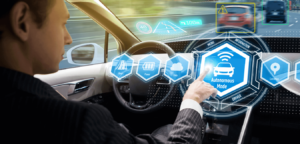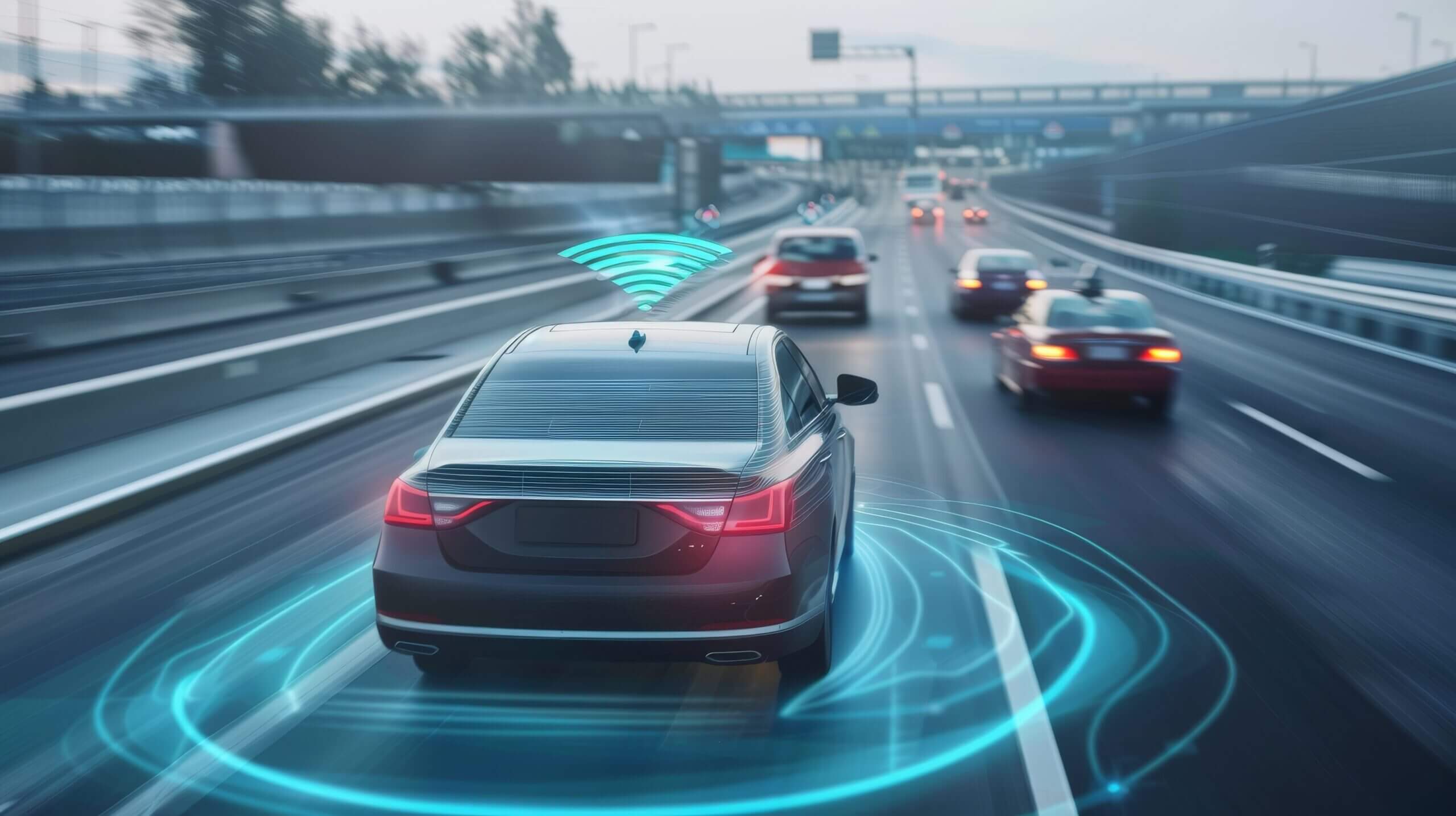The rise of Autonomous Vehicles is already changing transport systems. These are Autonomous Vehicles that operate through technological platforms and artificial intelligence to operate independently. In the future, self-driving cars can turn around the concept of transportation. That is not all – enhancing road safety, environmental conservation and so much more. Now let’s consider the change that AVs bring regarding transportation in the digital age.
What Are Autonomous Vehicles? A New Era in Transportation
The rise of Autonomous Vehicles are advanced machines that drive without human control. These vehicles rely on sensors, cameras, radar, and AI algorithms. Together, these tools detect the environment and navigate safely.
Several categories of car-driving automation are known, which reflect different stages of driver assistance toward the autonomous type.
Levels of Autonomy: Moving from Fully Robotized to Fully Autonomous
Autonomy is measured in levels, from zero to five, each increasing. Level zero is manual driving with no assistance systems involved. Levels one and two provide minimal assistance, like adaptive cruise control. By level five, the vehicle becomes fully autonomous, requiring no driver.
How Do Autonomous Vehicles Operate?
The rise of Autonomous Vehicles operates by combining data from sensors and maps. This data creates a 3D map of surroundings, which guides movement. AI algorithms permanently control analyzing obstacles and choices of path in real-time. Consequently, self-driving cars can anticipate and respond to dangers and offer a sleek transition with situations.
The digital spine of self-driving cars
Technology drives autonomous vehicles, with AI and machine learning being core. These advancements enable AVs to perceive and react like humans. This digital foundation is vital for autonomous vehicles to function effectively.
AI and Machine Learning: The Brains Behind Automation
Cognitive systems utilize a lot of inputs derived from various sensors, cameras, and radar. Machine learning allows vehicles to recognize patterns and identify road conditions. Algorithms learn from experience, continuously improving the vehicle’s driving performance.
Role of Sensors, Cameras, and Lidar Technology
Sensors, cameras, and lidar map the surroundings of the vehicle. Cameras capture visual data, while sensors detect obstacles, like pedestrians. Lidar (Light Detection and Ranging) technology sweeps through long distances to identify objects. Collectively, these tools instantaneously build up a real-time map picture of the driving environment.
Connectivity and Data: The Future of Vehicle Communication
Connectivity allows vehicles to communicate with each other, boosting safety. Data sharing provides insights on traffic and road conditions instantly. Accompanied by 5G networks, the connected vehicles will first provide highly reliable and fast transmission of data.
Large Benefits of Self-driving Cars
Automobiles harbored many benefits of safe, timely, and easy to get to Self-driving automobiles. They claim to achieve this by minimizing the role of humans in the managing of road networks.
How to Use Autonomous Technology to Make Our Roadways Safer
In the world, a shocking four out of five road accidents are caused by human factors exclusively. With AI-driven safety features, AVs can detect and avoid risks faster. Autonomous systems keep their eye on the road a hundred percent of the time, they don’t get tired or distracted.
Tackling traffic congestion and rate of fuel consumption
They can also communicate to minimize traffic hindrances in urban regions. By optimizing driving speeds and routes, they reduce fuel use. Eco-friendly driving and fuel efficiency make AVs cost-effective and greener.
Increased Accessibility and Mobility Options
Autonomous vehicles expand mobility for people who can’t drive. Elderly individuals and those with disabilities benefit from self-driving cars. AVs offer increased freedom for those relying on transportation assistance.
The impact of autonomous vehicle adoption: Challenges and Concerns
The key issues of adopting autonomous vehicles include their safety, privacy, and ethical issues. These factors are crucial to ensure public trust in autonomous technology.
Safety and Reliability Issues to Consider
Ensuring autonomous vehicles’ safety is essential, given their complexity. AVs need reliable technology to prevent errors during critical moments. Testing, regulations, and ongoing improvements are needed for full-scale adoption.

Privacy, Security, and Data Protection Issues
AVs capture huge amounts of information which raises concerns about privacy and security. Cyber security is important as there is privacy for damaging control of sensitive information. Users’ privacy rights must be balanced with data collection for AV operation.
Legality and Ethical Consideration of Automotive Vehicles
To what extent is it true that self-driving cars share fault in an accident? Automakers note that the problem of liability in autonomous vehicles will have to be solved on the legal level. Ethical questions also arise, especially regarding life-and-death decisions.
Autonomous Vehicles and the Environment
Autonomous vehicles can support environmental goals, mainly when paired with electric power. They provide for a long-term option for transport requirements in the urban and suburban areas.
Some Potential Impacts of Autonomous Vehicles on Carbon Footprint
Efficient driving by autonomous vehicles reduces emissions by limiting fuel use. Autonomous vehicles can lessen the carbon footprint of transportation sectors.
Electric Autonomous Vehicles: A Green Solution?
Electric autonomous vehicles contribute further to reducing carbon emissions. By eliminating fossil fuels, electric AVs promote cleaner air and greener cities. This shift aligns with global efforts to combat climate change effectively.
Urban Planning and Sustainable Transportation
AVs change how cities are planned, prioritizing efficient transport options. With self-driving cars, urban spaces can focus more on green spaces. Sustainable planning also benefits from reduced road infrastructure demands.
The Future of Autonomous Vehicles: Trends and Innovations
The future of AVs contains several trends; from 5G to smart cities. Autonomous vehicles are becoming integral to connected and digitalized urban areas.
AI along with the increasing development in 5G and Smart Cities
The development of 5G networks accelerates AV communication capabilities. In smart cities, connected vehicles will interact with intelligent infrastructure. This connectivity ensures optimized traffic flows and smart energy use.
Autonomous Delivery Services and Public Transport
Beyond private use, autonomous technology can transform delivery and public transport. Companies are piloting autonomous delivery services, from food to groceries. AVs also improve public transport accessibility with flexible, demand-based routes.
What’s Next? Predicting the Road Ahead
As technology evolves, fully autonomous vehicles are likely to become mainstream. Regulations and innovations will shape the impact and spread of AVs. The road ahead looks promising, with a future-focused on efficiency and safety.

Conclusion: Embracing the Autonomous Vehicles
The rise of Autonomous Vehicles marks a new chapter in transportation. With significant benefits and challenges, AVs offer a balanced approach to mobility. Safety enhancements, reduced emissions, and increased accessibility make AVs compelling. While ethical and regulatory concerns require attention, the path is clear. The concept of self-driving vehicles of the future suggests a green and effective for all.
